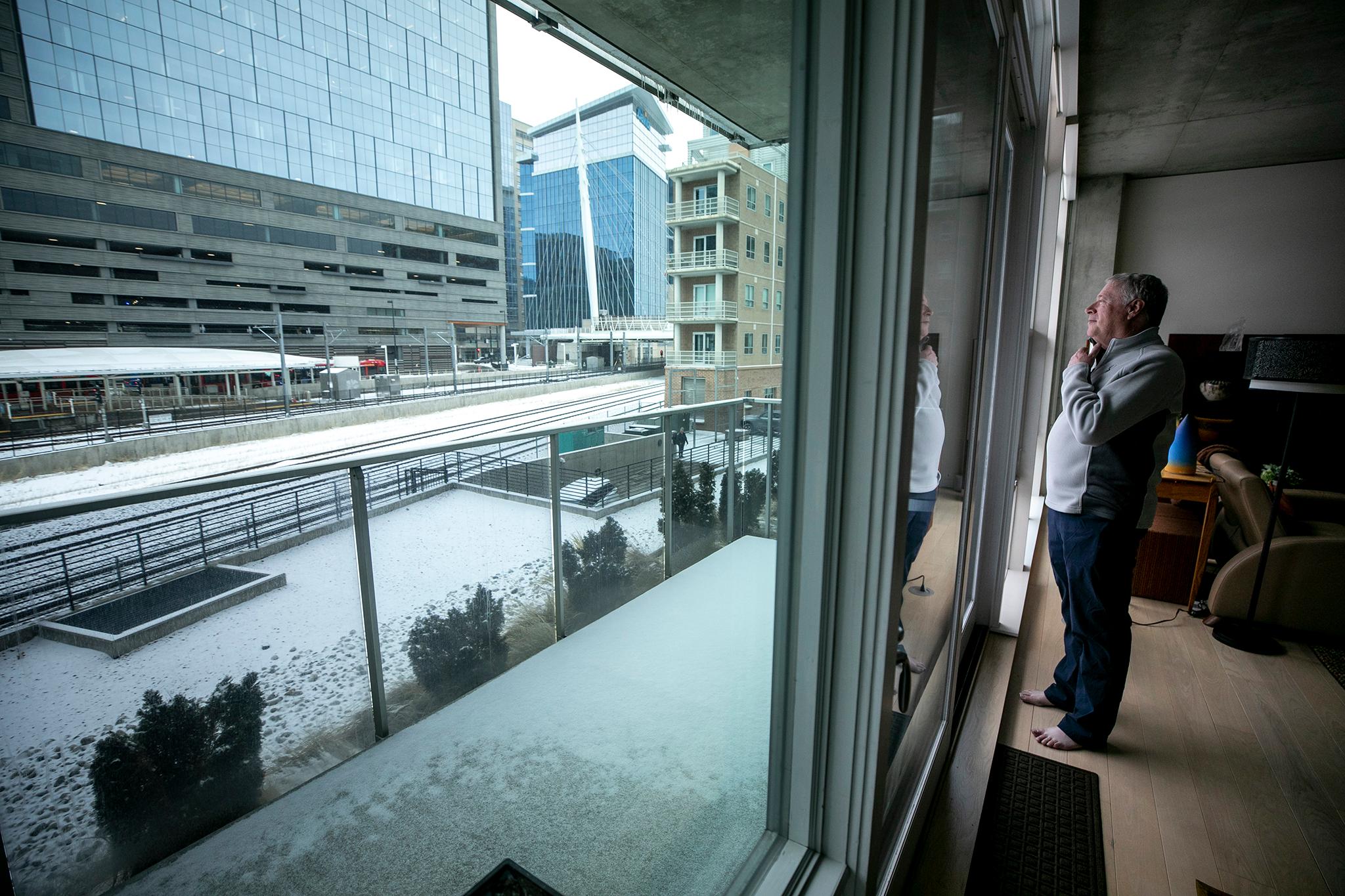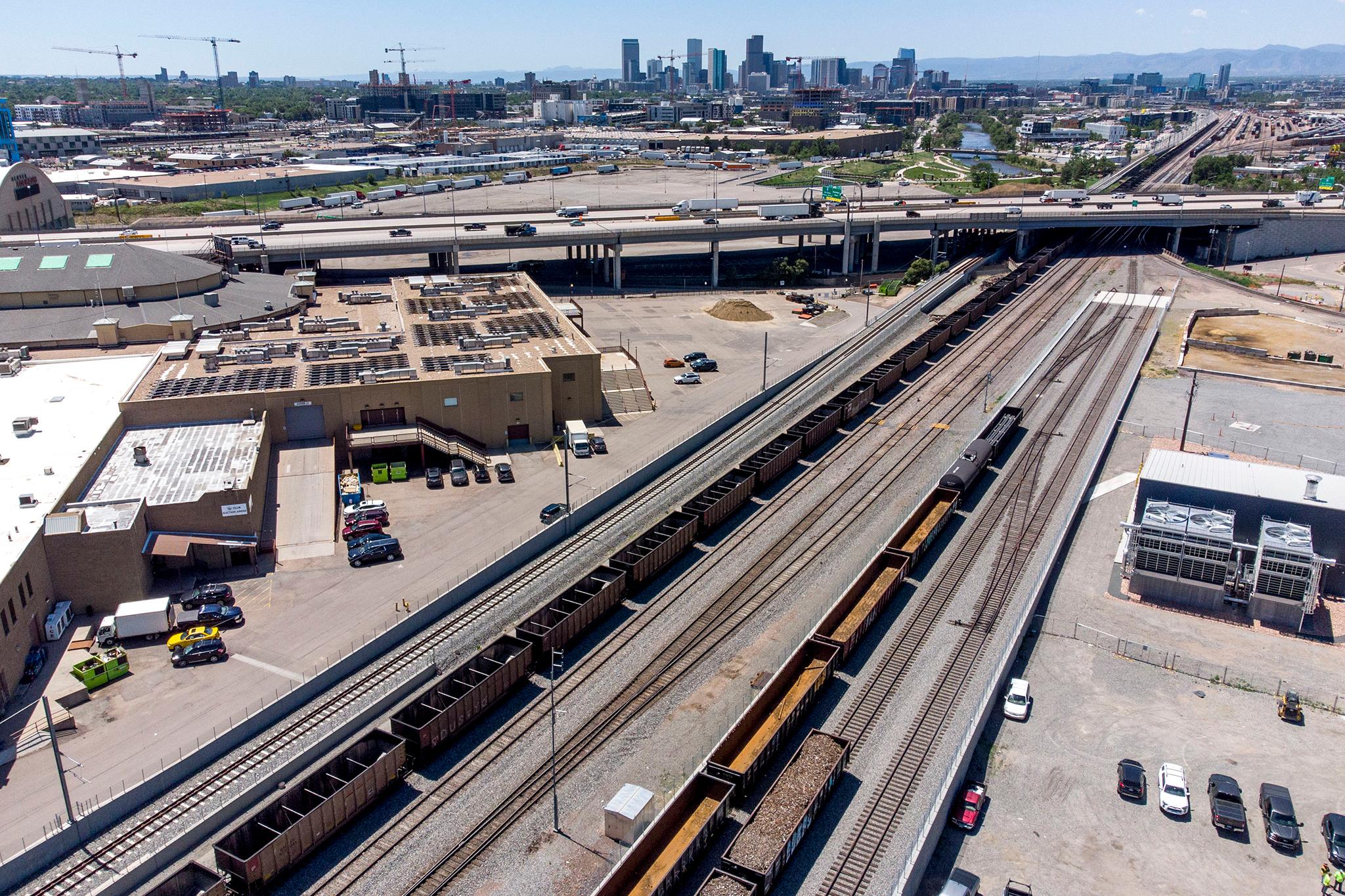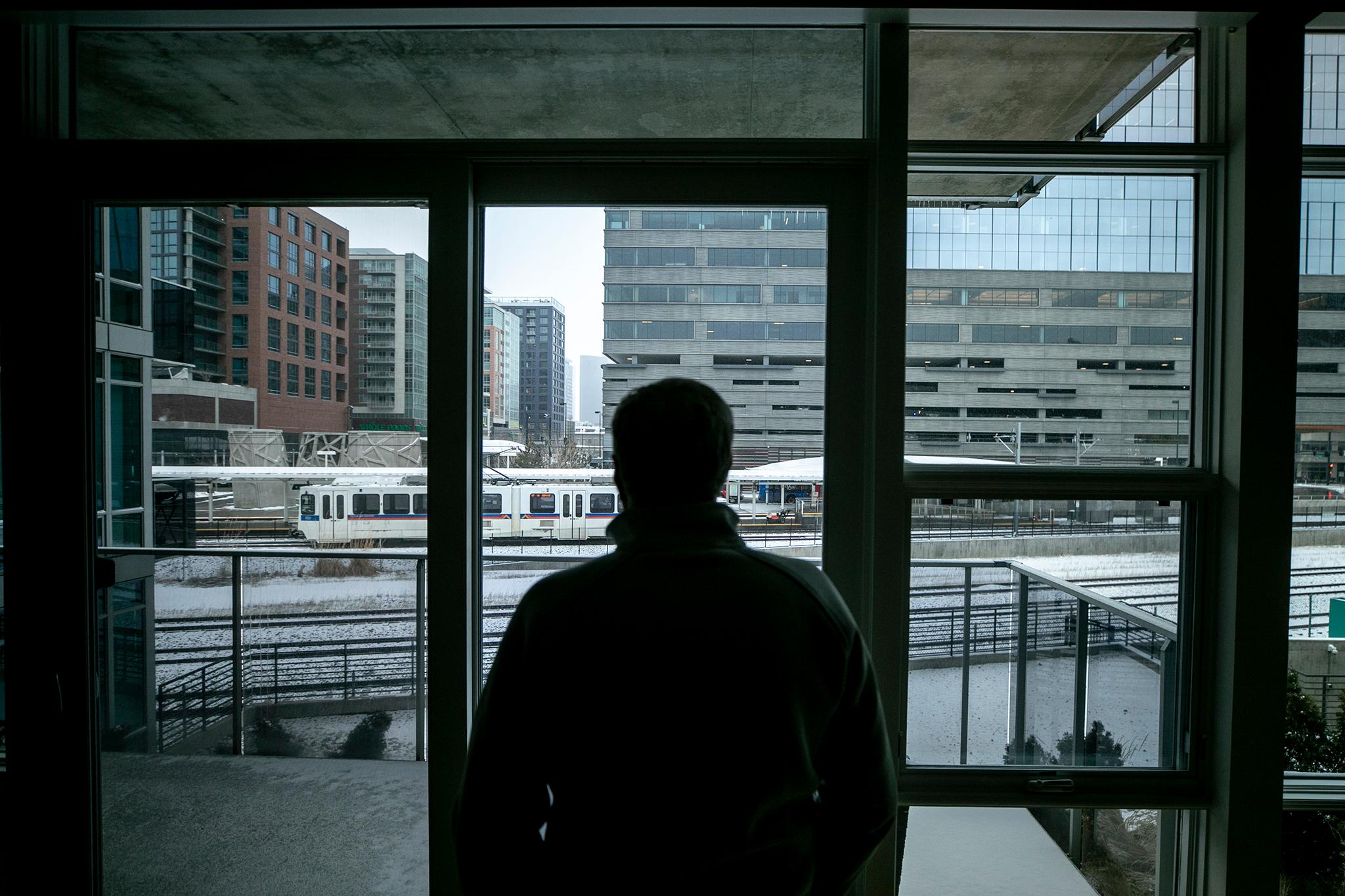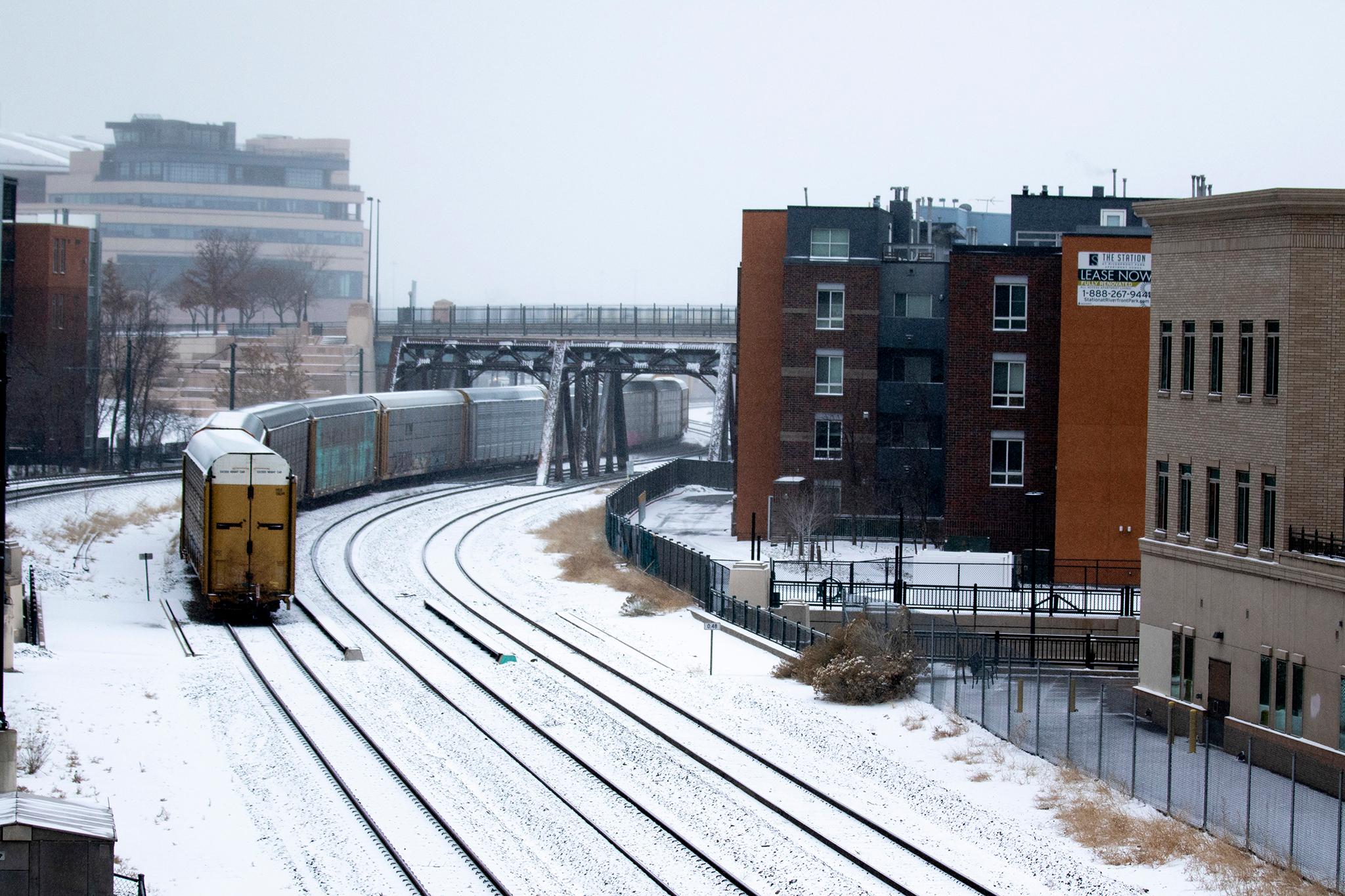When Don Cohen first bought his condo near the South Platte River in the 1990s, he thought he knew what he was getting into with the railroad right outside. Cohen's biggest concern was noise, but his building was relatively sound proof for that reason. Petroleum and toxic chemicals-like the ones spilled in East Palestine, Ohio earlier this month-didn't come through very often.
That's changed in recent years, and with a proposed railway project in Utah, the quantity of rail cars carrying toxic chemicals through Denver could continue to grow. Cohen has been trying to sound the alarm for years, but with the risk purely hypothetical, he said it's been hard to get people to listen.
The derailment disaster in East Palestine, Ohio caused mass evacuations, chemical scares, environmental contamination and a federal investigation. It's also drawn public attention to the risks posed by railroads that run through communities.
"When something goes puff, people are starting to worry," Cohen said.
So how vulnerable is Denver to such risks?
At-large councilmember and mayoral candidate Debbie Ortega, has spent years trying to answer this question. Ortega introduced legislation in the fall of 2022 that would regulate development near freight railways, but it's been postponed until the full results of the city's latest railroad safety study. City officials presented its initial findings Tuesday.

In the past five years, Denver has seen 12 railroad-related accidents, ranking fourth among similar sized cities, according to city analysis.
A recent incident occurred a year ago, when several BNSF train cars derailed into the South Platte River, closing part of the trail but not causing any casualties.
But Denver is no stranger to bigger damage like the derailment in Ohio. In 1995, a railcar leaked the equivalent of 3,300 gallons of muriatic acid and hydrochloric into the air next to a playground and community center in Swansea, a community that has long suffered from environmental contamination. Community members won a $200,000 settlement that led to a community park, which Denver recently named after the late environmental activist Lorraine Granado.
In 1983, Denver evacuated more than 2,000 people on Easter Sunday, after a railroad car spill created a plume of nitric acid gas over Denver. The New York Times reported at the time that 11 people were injured.
"If you have a breach of one of these, the impact can be catastrophic, and we're much closer to the railroad tracks in our city than East Palestine was," Ortega said.
The number of train cars carrying hazardous materials through Denver is expected to go up a lot in the next few years.
Around 102,000 hazardous cars passed through Denver in 2021. In 2025, the city expects to see more than 380,000 hazardous cars. That's because of the Uinta Basin Railway project, a proposed rail line that would bring oil from Utah through Colorado to national and international markets. Developers behind the line say it will bring infrastructure and economic opportunities to the Uinta Basin in Utah, but environmental activists and communities in Colorado are organizing against the project. They are concerned about threats to air quality and wildlife, the possibility of water contamination and increased dependence on oil.
Environmental activist and mayoral candidate Ean Tafoya has long advocated for better railroad safety measures, and said he worries about the Uinta Basin project. He was involved in a study with GreenLatinos Colorado and Colorado School of Public Health, which found that diesel exhaust emissions from freight traffic in North Denver could lead to increased risk of cancer, poor respiratory health and cardiovascular disease.
"What was not part of this railroad safety conversation is air quality," Tafoya said of Tuesday's presentation. "I'm really concerned about what that number of chain cars means for diesel, air pollution, our climate goals."

Development near railroads is also expected to increase.
As Denver continues to grow, residential and commercial developments have been popping up alongside the rail lines that run through the city, like near Union Station where Don Cohen lives and the proposed development plan near Ball Arena.
Much of this by design. As more housing is needed, politicians and activists have called for transit-oriented development, which focuses on growth around rail stations to promote accessibility and affordability and decrease dependency on cars. But RTD rail often shares infrastructure with freight rail, which also means more development near freight rail.
Ortega worries this could all lead to higher risk of derailments and contamination.
But with privatized railroad companies and freight rail largely regulated (and deregulated) at the federal level, there's only so much local officials can do.
In Washington D.C., political officials on both sides of the aisle have been pointing fingers over responsibility for what happened in East Palestine. In 2015, members of Congress pushed to kill Obama-era brake requirements for hazardous cars, a request from railroad companies that rail unions opposed. In 2018, then-President Donald Trump rolled back those brake rules, along with other transportation safety rules, saying they slowed the economy.
And just this week, U.S. Secretary of Transportation Pete Buttigieg called for stronger regulations for freight trains with toxic chemicals, criticizing railroad companies for pushing back against increased safety measures. President Joe Biden has also faced criticism from some rail workers for striking a deal that prevented a rail worker strike at the end of 2022. As a result, rail companies successfully blocked fights for workers to get paid sick leave.
At Tuesday's council committee meeting on railroad safety, Council President Jamie Torres also expressed frustration with rail companies. "They're notoriously difficult to work with, notoriously difficult to partner with," she said.
"We definitely need reform at the federal level," Tafoya said. "But I think it starts at all levels, right? What I've noticed about injustice and about these problems is, whenever there's jurisdictional issues, people just point fingers at each other instead of making progress."
There are a few things Denver can do, such as regulate development locally, allocate funds toward safety measures and create safety plans.
This is what Ortega's proposed measure is intended to do. The latest copy introduced last fall would require developers to apply for permits if they are building within 100 feet of a freight railway. To get approved, developers would have to show how they would mitigate railroad risks. The ordinance also called for safety standards for building near railroads.
The ordinance faced criticism from developers when Ortega presented it in the fall. Ortega expects to release an updated version soon, incorporating the latest safety report.
"This has never been about trying to stop development, it's about, what are we doing to make sure we're addressing the human life factor in protecting the people who will be in these buildings?" Ortega said.
Part of her plan is to give developers a "menu" of options to improve safety that could be considered on a case-by-case basis. Some of these options include building a garage in a particular location to take on derailment risk, safety fencing, concrete reinforcements, evacuation drills and more.
Traffic safety efforts at intersections to lower the risk of car, pedestrian and cyclist collisions at railroads play a role as well. It's part of Denver's Vision Zero commitment, which seeks to eliminate traffic deaths by 2030 -- despite deaths trending up in recent years.
But when it comes to funding, city officials said it's also important to look at these derailments in perspective when considering how to allocate city resources. In 2021, Denver saw three accidental deaths from railroad accidents, compared to 84 vehicle accidents, 156 suicides and 411 drug overdoses. Councilmember Amanda Sandoval mentioned how her district saw three bicycle deaths in December of 2022 alone.

Don Cohen, who lives right by the tracks and has been involved in rail safety advocacy, said that data feels like a false equivalency, given the catastrophic risk of casualties if just one of the petroleum cars were to explode.
Cars have to slow down when running through downtown, so Cohen is less worried about derailment and more worried about mechanical failure or terrorism. Cohen said he would like to see the tracks remain open to local freight, but toxic cars rerouted out of the city completely-a costly project he recognizes is unrealistic, given the power rail companies have, and what he sees as a lack of political will.
"It's never elevated to a sense of importance and urgency," Cohen said. "It's an abstract threat, until you've read a headline, and suddenly a train has blown up and it's bad stuff." Cohen said he hasn't felt a sense of urgency from the mayor's office, and that he expects officials will file the latest report away on a shelf, checking a box without taking much action.
Regardless, city budgeting for any potential future safety measures wouldn't occur until the fall, under a completely new, yet to be determined mayor. But Ortega plans to bring her ordinance on railroad development back to committee soon, once the full findings from the latest study come out.
Cohen has been communicating with Ortega and Sandoval about his concerns, and thinks it's a good first step, but he also wants to see more emergency planning. If there isn't the political will, he might take things into his own hands.
"We can't put bubble wrap around all of us, and we can't put bubble wrap around cities and communities. We can prioritize," he said. "We can do things within our buildings here. If nothing else, I'll call the fire department, we'll figure out a program, we'll start teaching our residents how to do it."












